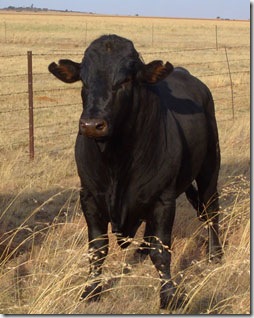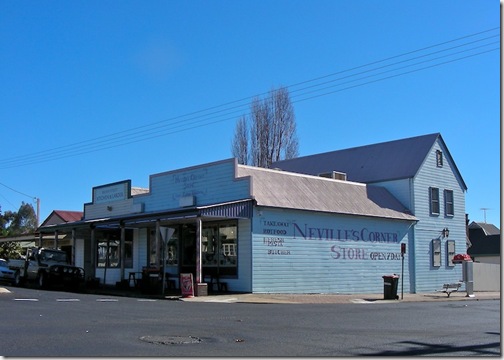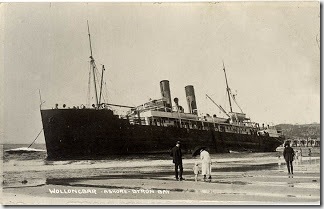One of the little known facts about Armidale is its role as national headquarters of a remarkable number of beef breed societies. I haven’t counted them all, but there are over twenty. I didn’t know that there were that many beef breeds!
This fact got me wondering about the history of cattle in Australia.
I found that the first cattle to arrive in Australia came on the first fleet, picked up at the Cape of Good Hope on the way through. There was old Gorgon the bull, four or five cows and a calf. They were almost certainly of Africander breed, with probably at least one balck Vaderlander.
They quickly strayed after a convict who was meant to be watching them fell asleep. Livestock were valuable. Five hundred men were mobilized to search for the cattle, but to no avail. There were no more known cattle in the colony until another ship arrived three years later, again from the Cape, with eleven black Vaderlanders aboard.
In 1795, a convict was told by an Aborigine about a herd of cattle to the west of Sydney. He went to investigate, and found the escaped herd near modern Camden. It had grown to sixty one, a remarkable rate of increase for such a small herd in just seven years.
In the still small settlement, these cattle were a valuable resource. Governor Hunter rode to see them. He named the area Cowpastures, made it a reserve for the wild cattle and ordered a guard house built to stop poachers. Numbers grew steadily.
Sydney was full of rogues intent on enriching themselves. Governor King laid personal claim to a large number of the wild herd on the basis that Governor Phillip had owned part of the original herd and had given them to him. The wild cattle were difficult to catch. King therefore promptly swapped the claimed cattle for 200 tame Zebu and black cattle from the Government herd!
In a colony of rogues, John Macarthur was the rogue of rogues. On his first exile in England, Macarthur went to see Minister Camden and persuaded the minister to give him a very large land grant around Mount Taurus.
This was blatant chicanery. Lord Camden had no idea that Mount Taurus was in the centre of the cattle reserve, that he was giving Macarthur not just a land grant, but control of the wild herd itself. Governors might object, but the grant stuck.
Macarthur himself was more interested in sheep than cattle. His efforts here laid the base for another great New England industry.
Some of the best cattle were domesticated, others were shot for meat. The herd vanished. However, its rugged genes became widely spread throughout the colony’s rapidly growing cattle numbers.
Note to readers: This post appeared as a column in the Armidale Express Extra on 19 December 2012. I am repeating the columns here with a lag because the Express columns are not on line. You can see all the Belshaw World and History Revisited columns by clicking here for 2009, here for 2010, here for 2011, here for2012(Belshaw's World), 2012 (History Revisited).












